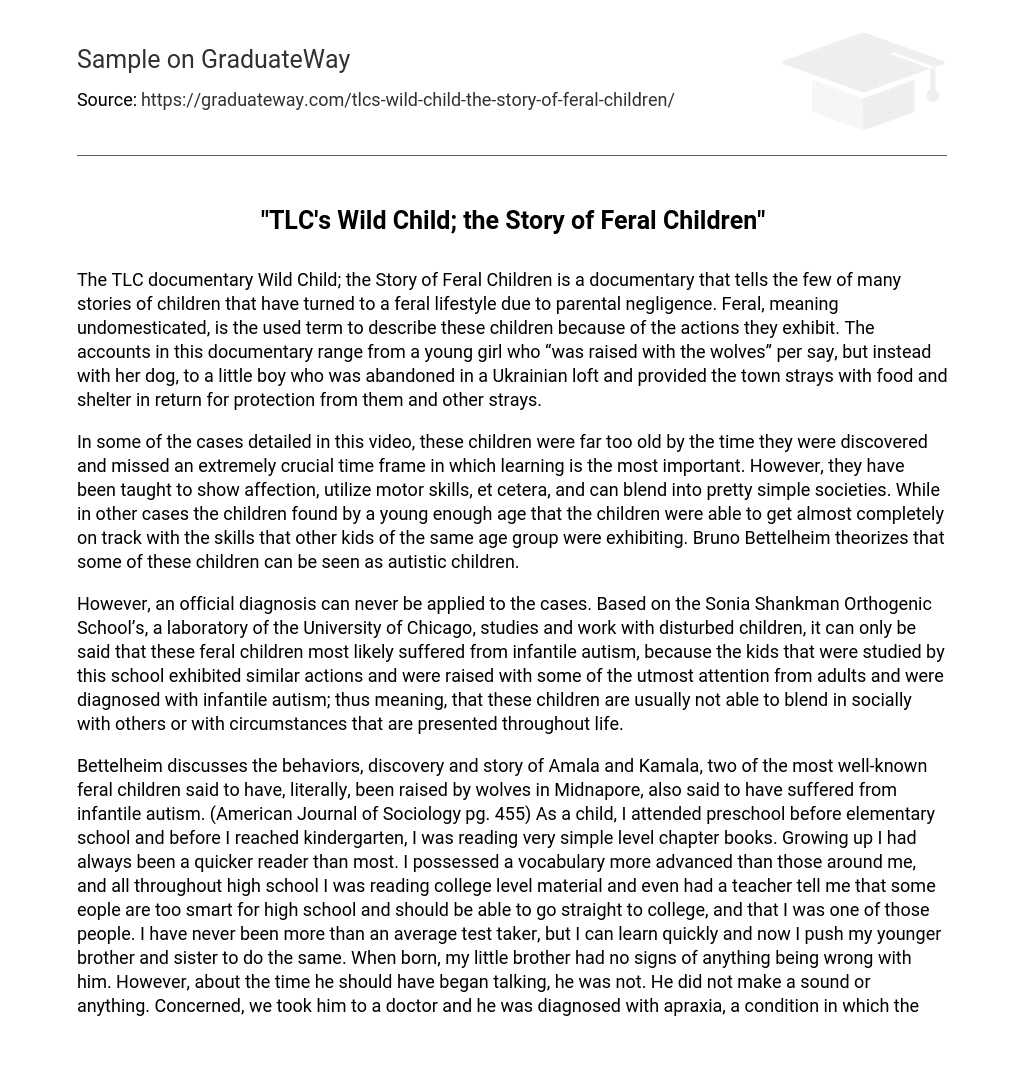The TLC documentary Wild Child; the Story of Feral Children focuses on children who have adopted a feral lifestyle because of neglect from their parents. These kids display actions that are considered undomesticated, hence the term “feral” used to describe them. The documentary features various accounts, ranging from a girl who grew up alongside wolves, in a sense, as she was raised with her dog, to a boy who was left in an Ukrainian attic and formed a symbiotic relationship with stray animals for protection and sustenance.
The video reveals that in certain instances, these children were found at a later age and consequently missed out on a critical period for learning. Nevertheless, they were taught skills such as displaying affection and using motor skills, allowing them to integrate into simpler societies. Conversely, in other cases, the children were discovered at a young enough age to catch up on the skills typically demonstrated by their peers of the same age group. According to Bruno Bettelheim’s theory, some of these children may exhibit traits similar to those seen in autistic children.
An official diagnosis cannot be given to these cases, but based on studies and work with disturbed children at the Sonia Shankman Orthogenic School, a laboratory of the University of Chicago, it can be suggested that these feral children probably had infantile autism. The children studied at this school showed similar behaviors and were raised with great care by adults who diagnosed them with infantile autism. Consequently, these children typically struggle to socially integrate with others and adapt to life’s circumstances.
In his discussion, Bettelheim examines the behaviors, discovery, and story of Amala and Kamala, two feral children who were reportedly raised by wolves in Midnapore. It is important to note that these children also experienced infantile autism (American Journal of Sociology pg. 455).
During my childhood, I attended preschool before elementary school and even before kindergarten, I was already reading chapter books at a basic level. Throughout my upbringing, I consistently demonstrated faster reading abilities compared to my peers. My vocabulary surpassed those around me, and in high school, I was studying material typically taught in college. At one point, a teacher suggested that some individuals are intellectually advanced for high school and should skip directly to college – specifically referring to me as one of those individuals.
Although my test performance was never exceptional, I had the ability to learn quickly. Currently, I encourage my younger brother and sister to strive for the same academic excellence. When my little brother was born, there were no apparent indications of any issues. However when he reached the age where he would have started speaking, he remained completely silent.
Concerned about this development, we consulted a doctor who diagnosed him with apraxia – a condition where the brain fails to communicate with the mouth to produce speech movements or sounds.
Being told that he might never speak, my family swiftly began learning sign language and attempted to teach my younger brother both ASL and speech. Eventually, our efforts seemed to have paid off as he now talks incessantly, and you would never guess that he had the condition initially. This video truly made me realize the importance of teaching him promptly, as without doing so, he truly would have never learned. Although the critical learning period in my life may have come to an end, I have now experienced the happiness of being exposed to numerous different aspects of life that I will continuously question and explore.





